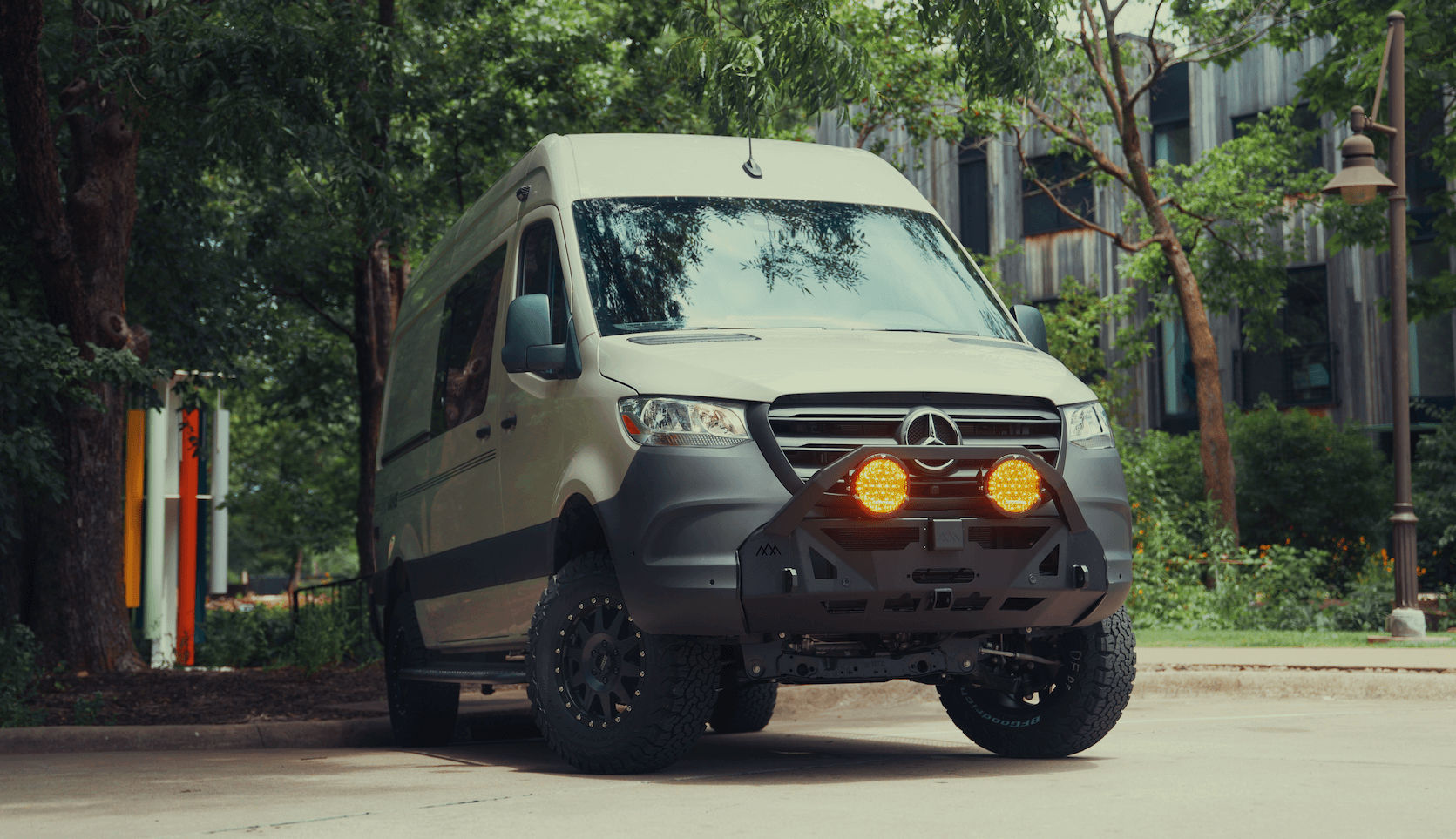Recreational Vans

Ventilation needs come down to one idea: move stale air out while bringing fresh air in along a deliberate path. In small envelopes like vans, trailers, or micro offices, even small daily habits add heat and moisture. Cooking, breathing, drying gear, and sun loading all raise temperature and humidity quickly. Without steady airflow, carbon dioxide rises, odors linger, and surfaces cool below the dew point, which invites condensation and mold. Think in terms of air changes per hour. For a typical high roof cargo van with an interior volume of roughly 300 to 400 cubic feet, a practical target is about 10 to 20 air changes per hour during cooking or hot weather. That equals roughly 50 to 130 cubic feet per minute of continuous flow. A single quality roof fan can often reach this range, but only with a clear intake path and minimal obstructions. Crossflow is king. Place intake low and on the windward side when parked, and exhaust high where the warm, moist air collects. Warm air rises, so a roof vent pulling out combined with a cracked window or louvered intake creates a gentle, efficient sweep across the living zone. This keeps sleeping areas comfortable and reduces hot ceiling pockets.
Stale air increases CO2 and VOC levels, which can cause headaches, poor sleep, and sluggish cognition. Steady ventilation keeps indoor air fresher and reduces allergens and odors from pets, gear, and cooking. Use a low speed at night for quiet background exchange and higher speeds during cooking or gear drying.
A person exhales about a liter of water vapor per day. Add simmering pots and wet jackets, and humidity climbs fast in a small cabin. Exhausting moist air at the source, especially near the galley or shower, prevents dew on windows, helps insulation stay dry, and protects wiring and fixtures.
Air movement increases perceived comfort by enhancing evaporative cooling. Aim for quiet fans below 50 decibels on sleep settings, and use soft duct turns to prevent turbulence. Insulated intakes reduce whistle and road noise, and careful fan choice balances airflow with battery draw.
Start by estimating volume: length times width times average interior height gives cubic feet. Multiply by your desired air changes per hour, then divide by 60 to find target CFM. Real world performance varies by duct friction, screens, and window crack width, so give yourself a buffer of 20 to 30 percent over the math target.
Consider specialty needs. If you cook frequently, prioritize a high extraction path near the stove line. For winter camping, keep cold drafts off the bed by routing intake to the galley or footwell. For pets, maintain background flow while you step away, using a low speed and temperature cutoff.
Good layouts respect airflow like water in a stream. Doors, cabinets, and bulkheads can block movement if the intake and exhaust are on the same end of the cabin. Offset them to create a gentle sweep. In summer, pull air across the sleeping zone. In shoulder seasons, move air past the cooking and drying areas first, then out the roof. Dust control matters on unpaved roads. A slight positive pressure while driving, achieved by a forward facing filtered intake, helps keep dust from sneaking in through seams. When parked in windy conditions, shift to leeward intakes to prevent backdrafts that push rain inside. Safety never gets compromised. Install a carbon monoxide detector, watch for backdraft when running portable stoves, and avoid exhausting into enclosed garages. Keep wiring for fans protected and fused properly, and use gasketed penetrations to prevent leaks around roof openings.
At night, use low fan speed with an intake near the bed for gentle flow and quiet. If temperatures drop, reduce intake and keep the exhaust on a whisper setting to manage humidity without chilling the cabin.
In cold climates, ventilate lightly but continuously. Pair airflow with insulation and thermal curtains to reduce condensation on metal ribs and window glass. Dry wet gear early in the evening so moisture does not collect while you sleep.
Use shade, reflective covers, and early evening purge cycles to dump accumulated heat. Point intake toward cooler air sources and add a small desk fan to move air near the body without cranking the roof fan.
When you are ready to translate these principles into a real cabin, thoughtful planning turns theory into quiet comfort. A well sized fan, a clean intake path, and smart control logic keep the space dry, cooler, and healthier day and night.
OZK Customs builds ventilation into the fabric of the rig, from intake placement and rain management to quiet power delivery and smart controls. Our team designs full custom layouts and integrates airflow with insulation, electrical, and cabinetry so the cabin breathes efficiently without compromising sleep or storage.
Let us tune the air in your next build. Bring us your travel style and climate goals, and we will specify the fan, the intake, and the control strategy that fit. We serve travelers nationwide from Northwest Arkansas and hand off every build with a walkthrough that makes airflow simple to live with.
Explore recreational vans | See custom build options | Finance friendly platforms
If you want ventilation that quietly manages heat, humidity, and air quality without draining your battery, talk with OZK Customs. We design and build complete systems that match your cabin size, power profile, and travel plans, then deliver a ready to roam rig with airflow you can feel and trust.
Ready for quiet, efficient airflow that actually solves heat and moisture in your rig? Book a build consult with OZK Customs. Our team designs intake and exhaust paths, selects the right fan and duct strategy, and integrates power systems so your ventilation works on the hottest days and quietest nights. Tell us how you travel, and we will design the air around it.
ADDRESS:
6159 E Huntsville Rd, Fayetteville, AR 72701
PHONE:
(479) 326-9200
EMAIL:
info@ozkvans.com